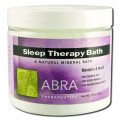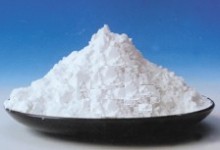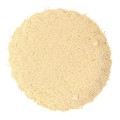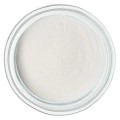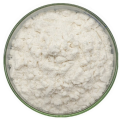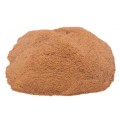 Loading... Please wait...
Loading... Please wait...- Home
- About Us
- Shipping, Returns & FAQ's
- Contact Us
-
For Your Information
- Canadian Customers Have a Choice if Shipping Via UPS
- Aura Cacia Homemade Aromatherapy Recipes
- Bella Nella Altered Art & Paper Crafts Blog
- Forms of Herbal Preparations
- Laundry Tips To Conserve Energy Blog from The Laundress
- The Story of Frontier Natural Products Co-Op
- Sovereign Silver Hydrosol and Aloe Protocol Stops Downward Spiral of Gut Dysbiosis
- Disclaimers
- Recommended Links
- RSS/Recent News
- The Story of Typhoon Housewares
- Reviews/Testimonials
- Raw Ingredients for Mfg
- Home
- Supplements
- Fitness
- Maltodextrin Powder Non-GMO/Conventional Bulk
- Home
- Grocery
- Sweeteners/Honey
- Maltodextrin Powder Non-GMO/Conventional Bulk
- Home
- Raw Materials
- Additives
- Maltodextrin Powder Non-GMO/Conventional Bulk
Maltodextrin Powder Non-GMO/Conventional Bulk
Product Description
Our maltodextrin is from Non-GMO corn identity preserved (IP).
Maltodextrin powder is a major food ingredient. It is used as a carrier for food flavors. Maltodextrin has a dextrose equivalent of 10. Meaning it has 10 percent of the sweetness value of dextrose which would be approximately 1/17 (6%) as sweet as sugar.
As a rather common additive to a number of different types of foods, maltodextrin is classified as a sweet polysaccharide. While containing sweet qualities, maltodextrin is considered to contain fewer calories than sugar.
While considered to be a carbohydrate, maltodextrin is understood to be more easily digested than some other forms of carbohydrates, leaving behind less of a potential for health issues. This can be especially important for an individual who is dealing with Type 2 diabetes with the use of diet. Usually made from rice, corn, or potato starch, maltodextrin is produced by cooking down the starch. During the cooking process, which is often referred to as a hydrolysis of starch, natural enzymes and acids help to break down the starch even further. The end result is s simple white powder that contains roughly four calories per gram, and extremely small amounts of fiber, fat, carbohydrates and protein.
At least one of the major artificial sweeteners relies on a base of maltodextrin. This means the substance can often be found in packaged goods such as instant pudding and flavored gelatins. The sweet taste of maltodextrin is a closer approximation to the taste of sugar, which makes it ideal for use in sweetening teas, coffee, and powdered soft drinks. Maltodextrin can also be used as a thickening agent in a number of sauces and salad dressings.
While considered to be a carbohydrate, maltodextrin is understood to be more easily digested than some other forms of carbohydrates, leaving behind less of the potential for health issues. This can be especially important for an individual who is trying to manage their Type 2 diabetes with their diet. Usually made from rice, corn, or potato starch, maltodextrin is produced by cooking down the starch. During the cooking process, which is often referred to as a hydrolysis of starch, natural enzymes and acids help to break down the starch even further. The end result is a simple white powder that contains roughly four calories per gram, and extremely small amounts of fiber, fat, and protein.
Around the kitchen, maltodextrin is among some of the most usable of the dextrin family. At least one of the major artificial sweeteners relies on a base of maltodextrin. This means the substance can often be found in packaged goods such as instant pudding and flavored gelatins. The sweet taste of maltodextrin makes is a closer approximation to the taste of sugar, which makes it ideal for use in sweetening teas, coffee, and powdered soft drinks. Maltodextrin can also be used as a thickening agent in a number of sauces and salad dressings.
Maltodextrin is less than 5% fermentable. Use up to 8 oz in 5 gallons of beer to increase body and mouthfeel.
While there is some amount of uneasiness with just about any type of food additive, it is important to remember that maltodextrin is an example of dextrin products that are derived from a natural source. While maltodextrin is a processed additive, the natural basis for the product helps to make it easier for the body to digest than many other forms of sugar substitutes.
Also, anyone who wants to watch their intake of carbohydrates or sugar will find that maltodextrin is a very helpful substance to have around the house. Whether using maltodextrin to sweeten liquids, or to help thicken a broth or gravy for a casserole, or just as a way to add a little sweetness without the calories, maltodextrin is an inexpensive and safe way to get the taste you want. As a bonus, you can have the sweet taste and not have to be concerned about many of the health risks associated with artificial sweeteners.
Q&A
Q: Is Maltodextrin easy to digest?
Maltodextrin is technically a ‘complex carbohydrate', however it has a high glycemic index score meaning it is very easily digested. Digestion is often a problem for ‘hard-gainers' (those who struggle to gain weight) so to this extent maltodextrin is extremely beneficial! If you are a hard-gainer then maltodextrin is the product for you, hence why it is used extensively in the majority of ‘off the shelf' weight-gain formulations and energy drinks. It is ideal for adding to a protein drink to increase the calorific value, and ultra convenient too! It is not as sweet tasting as dextrose either so adding a large amount to a protein shake or other beverage will not affect taste too significantly.
Q: What are the benefits of Maltodextrin?
When trying to gain weight it can be hard to eat constantly. When eating gets too much or you simply don't have the time to cook then combine maltodextrin with some whey protein for an instant meal with all the surplus calories you need to aid weight gain!
Q: What other uses does Maltodextrin have?
Even if you are not looking to gain weight, maltodextrin is still a very popular choice post-workout taken alongside protein and other nutrients. This is because it is digested easily and creates an 'insulin spike' which shuttles nutrients to the muscle cells faster than if those nutrients were simply taken on their own. As a carbohydrate, maltodextrin is also useful for the serious bodybuilder or athlete during carb cycling.
Conventional maltodextrin (GMO) is available as 'Other' in drop down list.
Nutrition Facts |
|||
| Serving Size 1 tsp (6g) | |||
|
|
|||
| Amount per Serving | |||
| Calories 25 Calories | from Fat 0 | ||
|
|
|||
| % Daily Value* | |||
|
|
|||
| Total Fat 0 g | 0% | ||
|
|
|||
| Saturated Fat 0g | 0% | ||
|
|
|||
| Trans Fat 0 g | |||
|
|
|||
| Cholesterol 0 mg | 0% | ||
|
|
|||
| Sodium 0 mg | 0% | ||
|
|
|||
| Total Carb 5 g | 2% | ||
|
|
|||
| Dietary Fiber 0 g | 0% | ||
|
|
|||
| Sugars 0 g | |||
|
|
|||
| Protein 0 g | 0% | ||
|
|
|||
| Vitamin A | 0% l | Vitamin C | 0% |
|
|
|||
| Calcium | 0% l | Iron | 0% |
|
|
|||
| *Percent Daily Values are based upon a 2,000 calorie diet. | |||
You Recently Viewed...
Currency Converter
Choose a currency below to display product prices in the selected currency.


